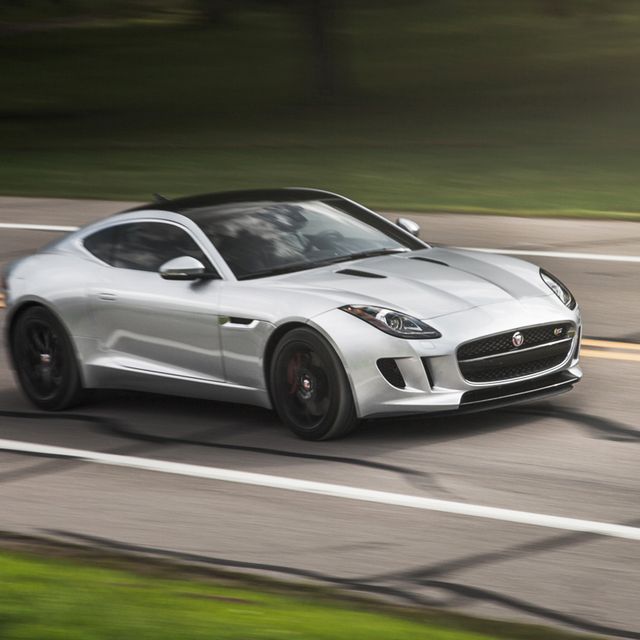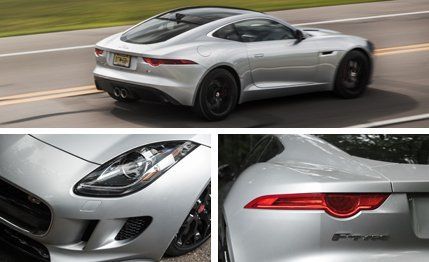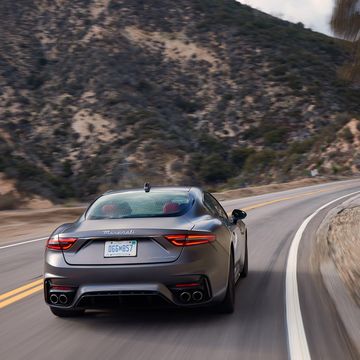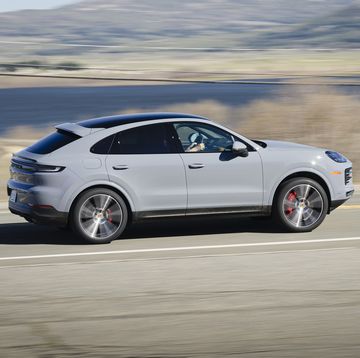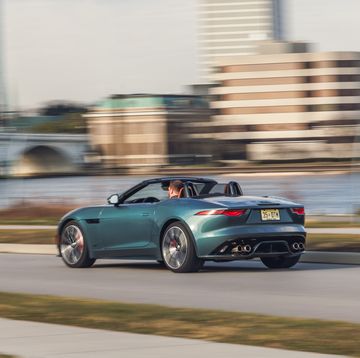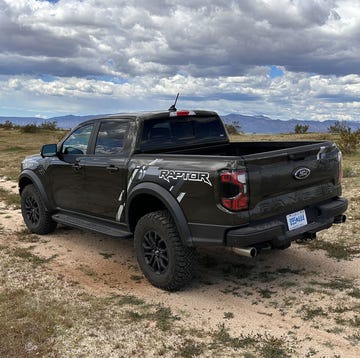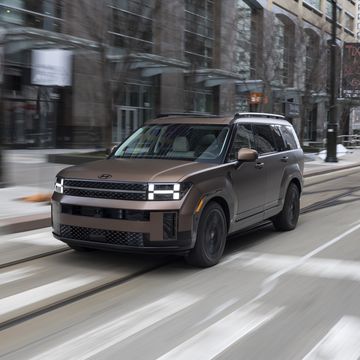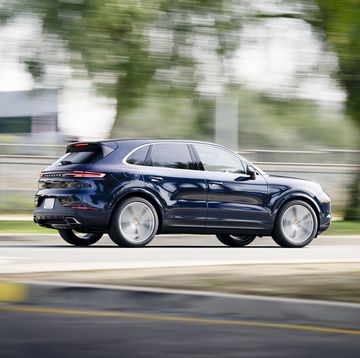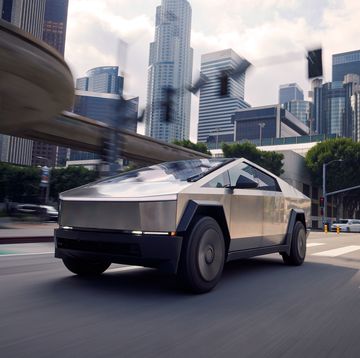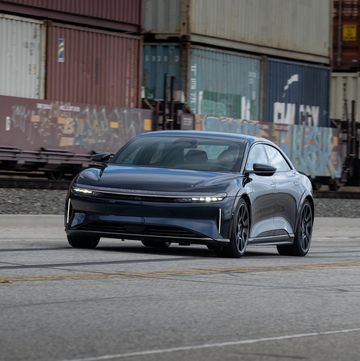Now that Jaguar’s F-type fleet includes six distinct models, picking one that best suits your fancy can be daunting. The coupes excel in aesthetics and practicality, the convertibles are more fun. Venturing beyond that body-style fork, this test of a V-6 S coupe should assist your smart purchase decision.
The $77,925 S coupe lives at the sensible end of the price range; it is $12,000 more than the base hardtop, $22,000 less than the 550-hp R coupe, and $15,000 less than the most powerful convertible. What you get here is the aluminum-intensive body and chassis common to all F-types, a ZF eight-speed paddle-shifted automatic (a manual is coming soon), and a 3.0-liter supercharged V-6 boosted to 380 horsepower. Spending the extra $12,000 over the base coupe means 40 additional ponies, one-inch-larger (19-inch) wheels, bigger front brakes, cockpit-adjustable dampers, a limited-slip differential, launch control, and what Jaguar calls an Active Sport Exhaust system.
It Studied Abroad
Our test car was blessed with $14,650 worth of options, including a $3400 Performance package (“Super Performance” brakes with red-painted calipers, upgraded seats, flat-bottomed steering wheel, configurable driving settings, and more), $2700 extended leather trim, $2400 for special lighting and parking-camera gear, $1800 for 14-way power-seat adjusters with memory and dual-zone climate control, a $1500 wheel upgrade, a $1200 fixed-glass roof, a $600 silver-metallic paint job, $600 for heated seats and steering wheel, and a $450 radio upgrade. Your lesson: Proceed with caution when adding options because Jaguar graduated with honors from the Porsche school of big-ticket adornments.
At least our test car’s gold-accented black and red interior decor made the $92,575 total feel well spent. The seats provide orthopedically perfect support, a full range of adjustability, and bolstering that doesn’t flinch during aggressive cornering and braking. Stitching and panel fits are meticulous, and there’s enough elbow room to keep a svelte duo from feeling crowded on long jaunts. Eleven cubic feet of luggage room hides under the sleek hatch, four more than in F-type convertibles.
Weighty—but Quick
The Eaton-supercharged 90-degree V-6 powering this show never makes you long for a V-8. It’s smooth at idle, potent when provoked, and as delightfully vociferous as Jag’s 550-horsepower eight-cylinder hell-raiser.
Even though this Jaguar coupe is roughly 700 pounds heavier than a Porsche Cayman S PDK, it accelerates nearly neck-and-neck with that Stuttgart special: to 60 mph in 4.3 seconds (versus the Cayman S’s 4.1) and through the quarter-mile in 12.9 seconds at 109 mph (compared with the Porsche’s 12.6 seconds and 112 mph). The Cayman’s better weight distribution gives it a cornering and braking edge: The Jag puts up 0.90 g on the skidpad versus the Porsche’s 0.99 g, and the F-type posts a 70-to-0-mph stopping distance of 157 feet, 11 feet longer than the Cayman S.
Yet all of these stats serve as the reassuring foundation for delightful back-road driving experiences. The hydraulically assisted steering is tight and quick, though actual road feedback is sometimes hard to detect. The lack of suspension suppleness that’s sometimes objectionable during freeway commuting comes in handy with the hammer down, when body control is impeccable. There’s a charming lack of understeer approaching the adhesion limit, so every last bit of tire grip is at your disposal. The brakes rise quickly to the stopping task without excessive pedal travel. The budget-minded should appreciate the fact that practically all of this enjoyment is also built into the $65,925 base F-type armed with a 340-hp version of the supercharged six.
There are annoyances to note. While the transmission is generally crisp-shifting and obedient to a driver’s commands, this eight-speed automatic doesn’t hold gears at the redline, even in manual mode. The upper portion of the steering-wheel rim hides parts of the tach and speedometer. And the left-located speedometer sacrifices legible legal-velocity readings to cram in enough digits to reach an unattainable 200 mph. (Top speed for our test car was 166 mph.)
Spoiler Alert
Our major gripe is the spoiler, which rises automatically at 70 mph. Jag claims that it cuts rear lift by 265 pounds. Given the coupe’s teardrop profile, the device is necessary to maintain high-speed stability; proof is the fact that there’s no means to defeat the spoiler’s rise with a switch.
The annoyance is that the spoiler significantly diminishes the inside mirror’s already small view of evil lurking behind you. Worse, when the spoiler is up—it doesn’t retract until you drop below 40 mph—the driver is treated to the mirror-image sight of an upside-down leaper and bold JAGUAR letters writ backward and upside-down.
This design flaw is easily resolved by removing the decklid ornamentation and filling in the holes. The truly creative F-type coupe owner would finish the job with a dashing “Bye-Bye!” lettered on the spoiler’s underside.
